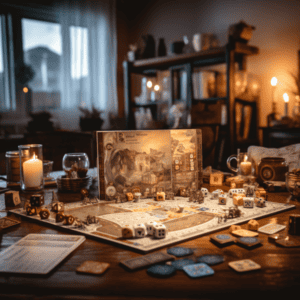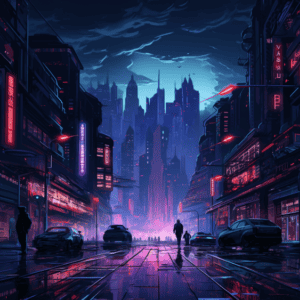
As a lifelong researcher and writer of monster lore and legends, I’m always fascinated by the stories behind mythical creatures. From tales of dragons to modern sightings of Bigfoot, these captivating creatures have been part of our culture for centuries. But why do we continue to be so intrigued by monsters? In this article, I’ll explore some of the fascinating stories behind these mystical beings, providing insight into their history and possible meanings.
In today’s world, it can often seem as though humanity is in control; that there are no mysteries left to uncover. But when you look closer at the stories surrounding mythical creatures like vampires or fairies, you realize how many questions remain unanswered. What does it mean for us if these creatures really exist? How has our understanding of them evolved over time? Through my exploration of monster lore and legends, I hope to shed light on all these questions—and maybe even discover something new!
History Of Monsters
I’m a researcher and writer of monster lore and legend, fascinated by the stories behind mythical creatures. I’ve spent countless hours exploring the origin of monsters, delving into legends, tales, mythology and folklore to uncover their secrets. From ancient times until today, monsters have been part of our cultural identity.

Types Of Monsters
From the mythical dragon to the legendary vampire, monsters have been a part of folklore and mythology for centuries. As an avid researcher of monster lore and legends, I’m often fascinated by how these creatures come to life in our imaginations.
The range of monsters is vast – from ogres to gremlins, cyclopses to vampires. Each one has its own unique characteristics that make it special; some are powerful, others sly, but all bring about elements of fear or awe in us as humans. Regardless of their differences though, they remain connected through the same common thread: cultural significance.
Here’s a look at some types of monsters and what makes them so captivating:
- Dragon – This majestic creature has represented power and strength throughout history. Thought to be able to breathe fire with their sharp talons and wingspan capable of soaring high into the sky, dragons were said to protect hidden treasures deep within caves or atop mountainsides.
- Vampire– These supernatural beings possess superhuman abilities such as enhanced speed and strength along with immortality due to their ability to survive on human blood alone. They’ve been portrayed as mysterious figures throughout literature, television shows, movies and more recently video games.
- Gremlin– Little mischievous critters who wreak havoc on unsuspecting victims by playing pranks or causing mischief like breaking machines apart piece-by-piece or stealing items from people’s homes. Gremlins have become iconic characters in popular culture since first appearing in films like The Twilight Zone back in 1984!
- Ogre– Huge green giants who can be both friendly and fearsome depending on their moods. Ogres have also made appearances in stories dating back hundreds of years ago where they’re usually depicted as hungry brutes who live off eating children or small animals found near villages or forests surrounding castles belonging to kings & queens!
- Cyclops– One eyed giants feared for their immense size and appetite for destruction which could easily crush anything standing in their way including buildings & cities alike! Cyclops’ have appeared many different times throughout Greek Mythology most notably being Polyphemus – son of Poseidon who famously fought Odysseus during his voyage home after defeating Troy!
No matter what kind you encounter, monsters continue to capture our attention because they represent something deeper than just scary figures lurking around corners—they offer up perspectives on issues we face today while providing comfort through our shared fascination with them across cultures spanning generations.
Cultural Significance
Having explored the various types of monsters found in folklore, it’s time to delve deeper into their cultural significance. Across cultures and times, mythical creatures have been used to signify something beyond what we can see with our eyes. Whether through monster myths or folk tales, these stories often represent a reflection of society’s values and beliefs.
For instance, many traditional European fairy tales feature dragons as villains that must be slayed by brave knights — reflecting the power dynamics between classes at that time. In Greek mythology, Cerberus is portrayed as a three-headed hound guarding Hades’ gates — symbolizing death as an inevitable part of life. This symbolic meaning behind mythical creatures has been around for centuries, making them integral parts of our culture today.
Monster lore and legends continue to fascinate us because they connect us with aspects of ourselves that cannot easily be articulated. Through exploring the fascinating stories behind mythical creatures, we are able to gain insight into how different societies viewed the world and discover how far human imagination can truly reach.
Conclusion

The stories of monsters and mythical creatures have been around for centuries, captivating our imaginations with their incredible tales. As we continue to explore these stories, it’s important to recognize the cultural significance they hold in many societies—from ancient history all the way up until now. From fearsome dragons to gentle giants, each creature has a unique story that continues to live on.
As I reflect upon my journey exploring monster lore and legends, I can’t help but feel inspired by the beauty of diversity found within this realm. Every creature holds its own lessons—teaching us about strength, courage, understanding, acceptance, and more. In an ever-changing world where so much is uncertain, it helps to remember that there are still some timeless truths waiting to be discovered if only we take the time to look.
In closing, I invite you join me in uncovering these fascinating stories behind mythical creatures –stories which offer comfort and wisdom from ages past–and use them as a guide through our present times and into the future.






